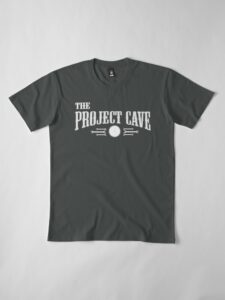The table saw is the foundation of carpentry and woodworking shops around the world! From the hobbyist to the highest-level professional, it is the workhorse. Often the first tool used in any and every project. If you are a professional, you already know what you have and what you dream of getting if you don’t have it.
If you are a beginner, that choice is not as clear cut. So, here is a little background for different types of table saws and what you can expect from them.
Benchtop/Compact/Portable Table Saws
A benchtop table saw is the most basic. They are small and they fit on the workbench or in a cut out section that makes them part of the workbench. Stands are available and make a good addition.
If corded, they plug into a standard wall outlet. Battery powered options are available. Bench top table saws are low powered compared to their bigger brothers.

Because of their size and light weight, it can be tricky to cut larger materials. Rip fences tend to be shorter as the tables are not very wide or deep. While these saws can cut 4’ by 8’ sheet goods, you’ll want to make sure the saw is secure before you do.
These saws are direct drive, meaning the saw blade attaches directly to the motor. Blades are 10” or 8¼” maximum. Make sure you know what size blade your saw needs. You can use an 8.25” blade on a 10” saw if the hole in the blade fits on the saw’s arbor. A 10” blade CAN NOT safely be used on an 8.25” table saw.
Job Site Table Saws
Job site saws are what you see in most of the advertising for the big box stores. In fact, I just did a keyword search for “table saw” on one of the stores, and the first three results on the page were job site saws. They are most popular choices available today.
More powerful than their bench top counterparts, they still use the same standard wall outlet but step it up in power. 15 amps of power is common. They are larger and often come with their own wheeled folding stands. This makes for an easy to move setup that can handle the bigger cuts.
Their portability makes them great for smaller shops. Set it up, make your cuts, and then get it out of the way. These are also direct drive saws, although I did see at least one saw advertised as a worm drive saw.
As an Amazon Associate I earn from qualifying purchases.
Contractor Saws
These were the go to saws for many contractors. I currently have an old Craftsman contractor saw. While not as popular as they once were, this is where cast iron table tops and belt drives come into the game. Factors that make a saw heavier and reduce vibration.
Users can wire these saws for either 120v or 240v. 120 is great for saws that get taken from job site to job site. 240 is awesome if you have ready access to one of those receptacles. The saw tends to bog down a little less with 240v.
These saws can be either direct drive or belt driven with the motor hanging on the back of the saw. It is also easier to upgrade the saw’s fence. That Craftsman I mentioned before has an upgraded fence and it performs like a champ.
Read out How To Build a Simple Crosscut Sled for your table saw or check out the video!
Cabinet Saws
These are the saws every serious woodworker wants. They are heavy and stable. They don’t move from job site to job site. Cabinet saws don’t even move around the floor in the shop. They stay right where they are set up. Usually wired up for 240v with motors up to 5 horsepower.
Cabinet saws have the tightest tolerances and make the cleanest cuts. With a good fence, their precision and accuracy are much better than all the other choices.
They will move through hardwoods and sheet goods with ease. They take up the most room in a shop. Not necessarily from the footprint of the saw by itself, but from the wings and runoff table. Add these items to make full use of the versatility of a cabinet saw.
They are also the most expensive. At least $1,500.00 for a new one (cheap) but well over $2,000.00 for high quality brand names.
The cabinet saws will have cast iron tabletops and use belt drives. Some will accept up to 12 inch blades. These saws run for entire workdays and produce outstanding results with ease.
So, What Should I Get?
There are several ways to go if you are a beginner looking to get into woodworking. What I wouldn’t do is jump right into the deep end with a cabinet saw. A saw like that is something you grow into. You’re not going to need that as a beginner.
If budget is a constraint and the projects you work on are small, I’d consider a bench top saw. They’re less expensive and can get the small jobs done.
But a tight budget can get you into a contractor saw as well. You’ll have to stalk Craigslist or Facebook Marketplace, but you can find some good stuff there. Just make sure the thing turns on and it has a decent fence. That’s how I found my old Craftsman. And there is nothing wrong with those older saws. It may require a little elbow grease to get it back in shape, but that is a satisfying job.
That said, If I were just getting started, I would opt for a decent jobsite saw. They have a great combination of versatility, portability, and price. As skills improve, then it will be time to consider an upgrade.
The links below contain highly rated versions of a portable, jobsite, and contractor table saws.





